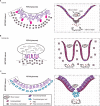A Neglected Animal Model for a Neglected Disease: Guinea Pigs and the Search for an Improved Animal Model for Human Brucellosis
- PMID: 30429834
- PMCID: PMC6220108
- DOI: 10.3389/fmicb.2018.02593
A Neglected Animal Model for a Neglected Disease: Guinea Pigs and the Search for an Improved Animal Model for Human Brucellosis
Abstract
Brucellosis is a bacterial disease caused by species of the Brucella genus and affects a wide variety of domestic and wildlife species and is also an important zoonosis. The global burden of disease is difficult to assess but Brucella spp. have a worldwide distribution and are endemic in the Middle East, Africa, South America, and Asia. The clinical signs of fever and malaise are non-specific, and the available serological diagnostic tests lack a high degree specificity in endemic regions compared to other important public health diseases such as malaria. A better understanding of the pathogenesis of brucellosis through discoveries in animal models could lead to improved diagnostics and potentially a vaccine for human use. Mouse models have played an important role in elucidating the pathogenesis but do not replicate key features of the disease such as fever. Guinea pigs were instrumental in exploring the pathogenesis of brucellosis in the early nineteenth century and could offer an improvement on the mouse model as a model for human brucellosis.
Keywords: Brucella spp.; animal model; comparative placentation; guinea pig (Cavia porcellus); zoonotic disease.
Figures


References
-
- Alton G. G. (1969). A trial in guinea-pigs of four methods of vaccination against Brucella melitensis infection. Res. Vet. Sci. 10 329–331. - PubMed
-
- Arenas-Gamboa A. M., Rice-Ficht A. C., Fan Y., Kahl-McDonagh M. M., Ficht T. A. (2012). Extended safety and efficacy studies of the attenuated Brucella vaccine candidates 16 M(Delta)vjbR and S19(Delta)vjbR in the immunocompromised IRF-1-/- mouse model. Clin. Vaccine Immunol. 19 249–260. 10.1128/CVI.05321-11 - DOI - PMC - PubMed
Publication types
Grants and funding
LinkOut - more resources
Full Text Sources
Miscellaneous

